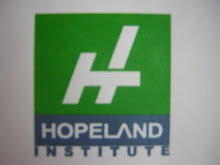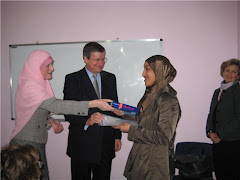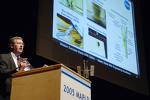




Edinburgh is very proud of its great tradition of medical pioneers so I thought I’d just outline one or two here to highlight the importance of Scotland in Medical History.
Photos from left to right, top to bottom: Littlejohn, Fleming, Wilmut, Simpson and Lister.
Photos from left to right, top to bottom: Littlejohn, Fleming, Wilmut, Simpson and Lister.
Sir James Young Simpson (7 June 1811 – 6 May 1870) was a Scottish doctor and an important figure in the history of medicine. Simpson discovered the anaesthetic properties of chloroform whilst trying out his latest chemical experiment on his male dinner guests.
It was not initially adopted until Queen Victoria chose to use it during childbirth, after which it became very popular successfully and was introduced for general medical use. When he died, 100,000 people lined the streets and 1000 doctors and nurses walked in the cortege.
Joseph Lister, 1st Baron Lister, OM, FRS (5 April 1827 – 10 February 1912) was an English surgeon who promoted the idea of sterile surgery while working at the Glasgow Royal Infirmary. He successfully introduced carbolic acid (phenol) to sterilize surgical instruments and to clean wounds, which led to reduced post-operative infections and made surgery safer for patients.
Sir Henry Duncan Littlejohn, 1826 - 1914. President of the Royal College of Surgeons, Edinburgh.
As Edinburgh's first Medical Officer of Health, Henry Littlejohn did much to educate the city's population in matters of personal and public hygiene. During his term, the death rate dropped dramatically and cases of smallpox and typhus became a rarity. A Professor of Medical Jurisprudence at Edinburgh University, he was also a brilliant teacher, holding his classes of over 250 students spell-bound.
Dr Andrew Duncan, Medical reformer. Born in St. Andrews, Duncan attended the University in that town, before going to the University of Edinburgh to complete his education. He followed a medical career, going on to become Professor of the Theory of Medicine at Edinburgh (1790) and President of the Royal College of Physicians. Duncan lectured on public health and set up a dispensary in Edinburgh in 1776 to try to improve the health of its citizens.
Duncan is best known for his humane treatment of the mentally ill. He had been disgusted by the death of his patient the poet Robert Fergusson (1750 - 74) in the horrific conditions of the Bedlam. He fought for an appropriate institution to house the insane and approval to build the Edinburgh Lunatic Asylum (or East House) was eventually given in 1807. The Asylum was built in the Morningside district of the city by architect Robert Reid and grew into the Royal Edinburgh Hospital.
Sir Alexander Fleming (6 August 1881 – 11 March 1955) was a Scottish biologist and pharmacologist. Fleming published many articles on bacteriology, immunology and chemotherapy. His best-known achievements are the discovery of the enzyme lysozyme in 1923 and the antibiotic substance penicillin from the fungus Penicillium notatum in 1928, for which he shared the Nobel Prize in Physiology or Medicine in 1945 with Howard Walter Florey and Ernst Boris Chain.
Sir Ian Wilmut, OBE (born 7 July 1944) is an English embryologist and is currently one of the leaders of the Queen's Medical Research Institute at the University of Edinburgh. He is best known as the leader of the research group that in 1996 first cloned a mammal from an adult somatic cell, a Finnish Dorset lamb named Dolly. He was granted an OBE in 1999 for services to embryo development. In December 2007 it was announced that he would be knighted in the 2008 New Year Honours
As Edinburgh's first Medical Officer of Health, Henry Littlejohn did much to educate the city's population in matters of personal and public hygiene. During his term, the death rate dropped dramatically and cases of smallpox and typhus became a rarity. A Professor of Medical Jurisprudence at Edinburgh University, he was also a brilliant teacher, holding his classes of over 250 students spell-bound.
Dr Andrew Duncan, Medical reformer. Born in St. Andrews, Duncan attended the University in that town, before going to the University of Edinburgh to complete his education. He followed a medical career, going on to become Professor of the Theory of Medicine at Edinburgh (1790) and President of the Royal College of Physicians. Duncan lectured on public health and set up a dispensary in Edinburgh in 1776 to try to improve the health of its citizens.
Duncan is best known for his humane treatment of the mentally ill. He had been disgusted by the death of his patient the poet Robert Fergusson (1750 - 74) in the horrific conditions of the Bedlam. He fought for an appropriate institution to house the insane and approval to build the Edinburgh Lunatic Asylum (or East House) was eventually given in 1807. The Asylum was built in the Morningside district of the city by architect Robert Reid and grew into the Royal Edinburgh Hospital.
Sir Alexander Fleming (6 August 1881 – 11 March 1955) was a Scottish biologist and pharmacologist. Fleming published many articles on bacteriology, immunology and chemotherapy. His best-known achievements are the discovery of the enzyme lysozyme in 1923 and the antibiotic substance penicillin from the fungus Penicillium notatum in 1928, for which he shared the Nobel Prize in Physiology or Medicine in 1945 with Howard Walter Florey and Ernst Boris Chain.
Sir Ian Wilmut, OBE (born 7 July 1944) is an English embryologist and is currently one of the leaders of the Queen's Medical Research Institute at the University of Edinburgh. He is best known as the leader of the research group that in 1996 first cloned a mammal from an adult somatic cell, a Finnish Dorset lamb named Dolly. He was granted an OBE in 1999 for services to embryo development. In December 2007 it was announced that he would be knighted in the 2008 New Year Honours






